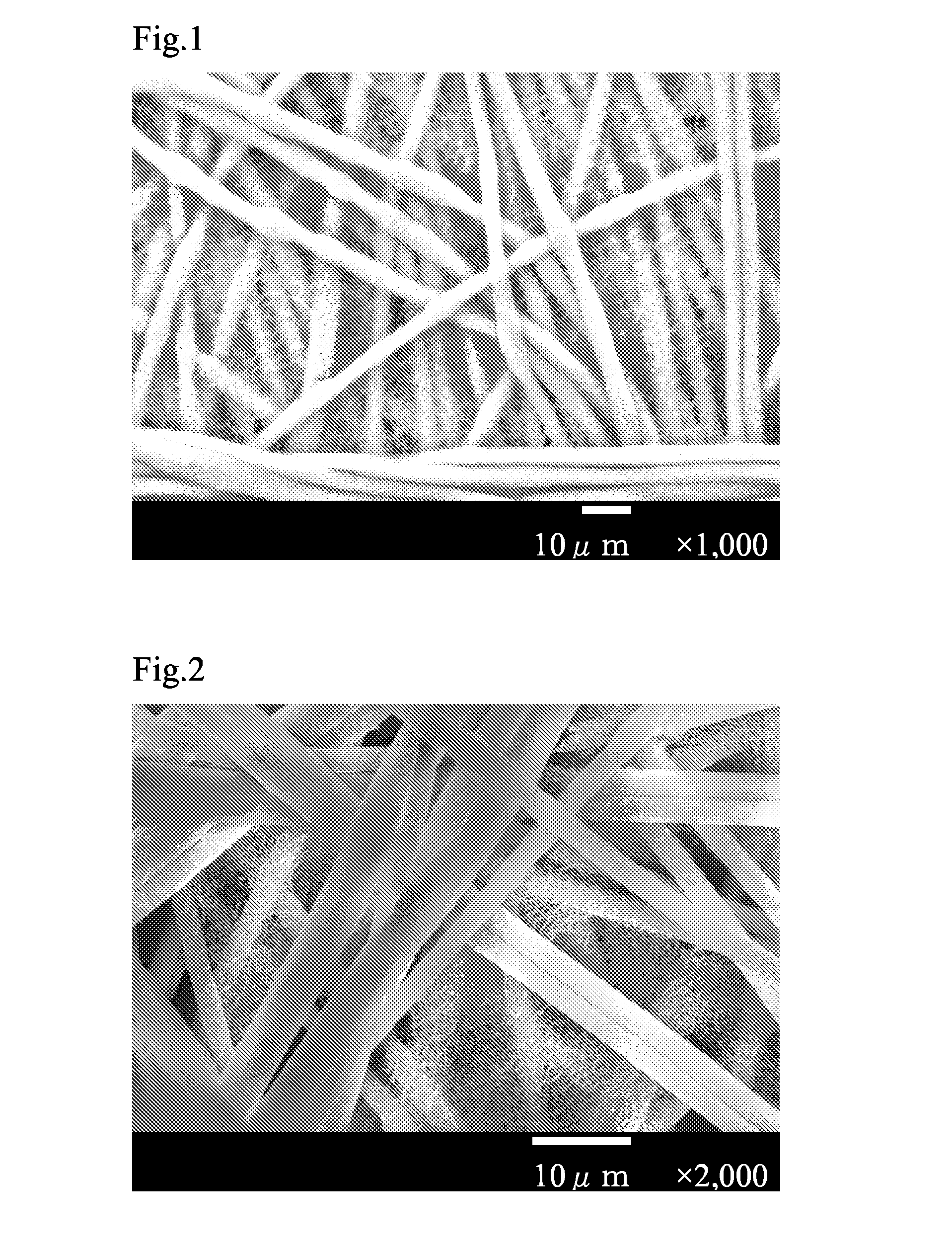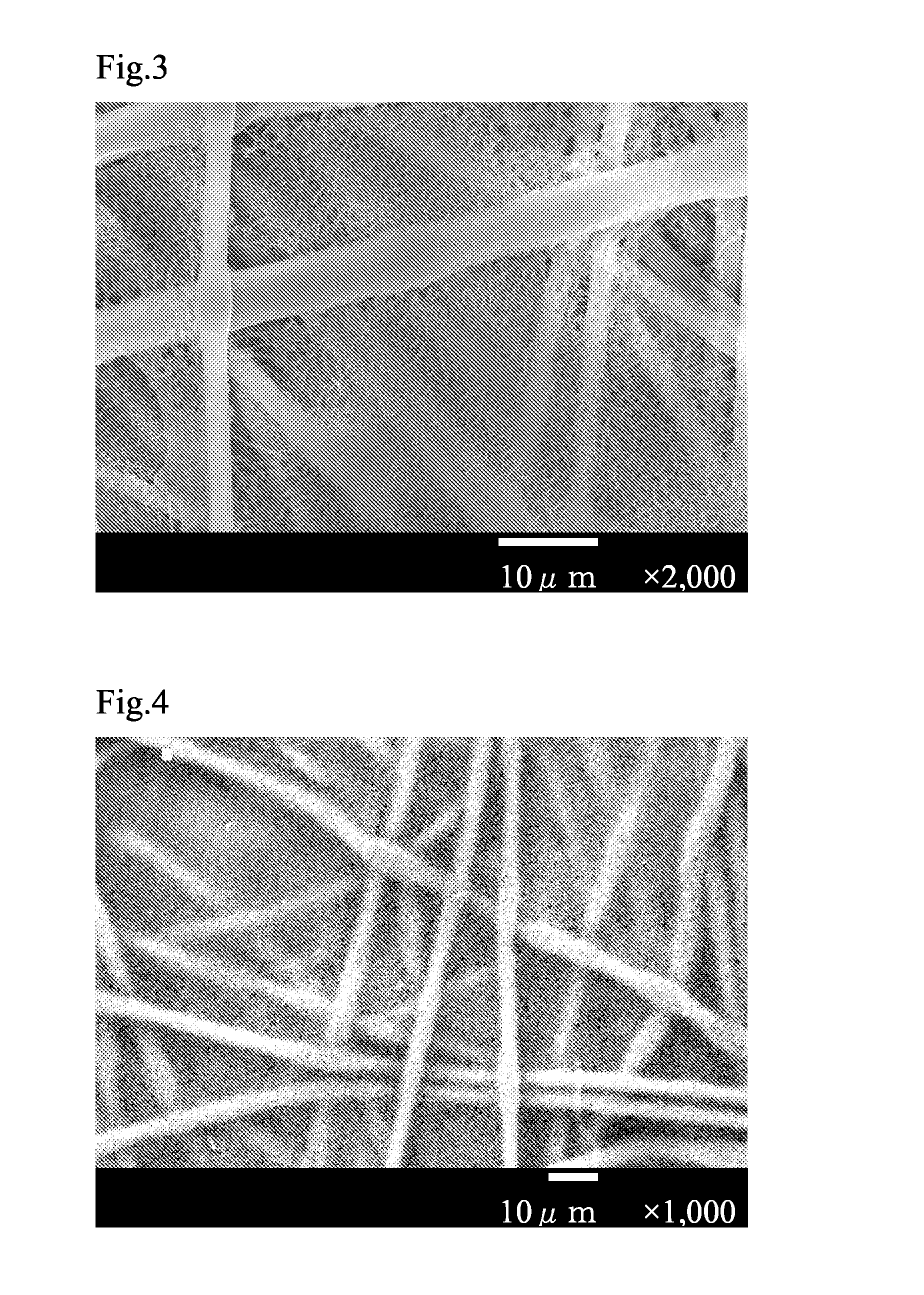Porous sheet, separator for electrochemical element, and method for manufacturing porous sheet
a technology of electrochemical element and separator, which is applied in the direction of cell components, cell component details, electrochemical generators, etc., can solve the problems of high percentage of defective products, reduced capacity, and weak puncture strength of conventional paper separator, so as to suppress the leakage of electrolytic solution, improve the puncture strength, and dry up resistance
- Summary
- Abstract
- Description
- Claims
- Application Information
AI Technical Summary
Benefits of technology
Problems solved by technology
Method used
Image
Examples
example 1
[0134]Porous substrate 3, which was impregnated with polymer solution 1 by using a dip coater, was allowed to go through between two gum rolls having a diameter of 50 mm at a squeezing pressure of 30 N / cm to remove excess polymer solution, and was further immersed in aqueous solution 1 for 5 minutes to allow precipitation of the net-like structural body. Then, porous substrate 3 was washed with ion-exchanged water, dried by contacting it with a Yankee dryer at 130° C., and was subject to a calendar processing with a linear pressure of 200 N / cm to give the porous sheet 1.
example 2
[0135]Porous substrate 3, which was impregnated with polymer solution 2 by using a dip coater, was allowed to go through between two gum rolls having a diameter of 50 mm at a squeezing pressure of 30 N / cm to remove excess polymer solution, and was further contacted with aqueous solution 1 for 1 minute to allow precipitation of the net-like structural body. Then, porous substrate 3 was washed with ion-exchanged water, dried by contacting it with a Yankee dryer at 130° C., and was subject to a calendar processing with a linear pressure of 200 N / cm to give the porous sheet 2.
example 3
[0136]A net-like structural body was allowed to precipitate by using the conditions shown in Tables 4 and 7 in a similar manner as Example 2, to give the porous sheet 3.
PUM
| Property | Measurement | Unit |
|---|---|---|
| diameter | aaaaa | aaaaa |
| pore diameter | aaaaa | aaaaa |
| melting point | aaaaa | aaaaa |
Abstract
Description
Claims
Application Information
 Login to View More
Login to View More - R&D
- Intellectual Property
- Life Sciences
- Materials
- Tech Scout
- Unparalleled Data Quality
- Higher Quality Content
- 60% Fewer Hallucinations
Browse by: Latest US Patents, China's latest patents, Technical Efficacy Thesaurus, Application Domain, Technology Topic, Popular Technical Reports.
© 2025 PatSnap. All rights reserved.Legal|Privacy policy|Modern Slavery Act Transparency Statement|Sitemap|About US| Contact US: help@patsnap.com



